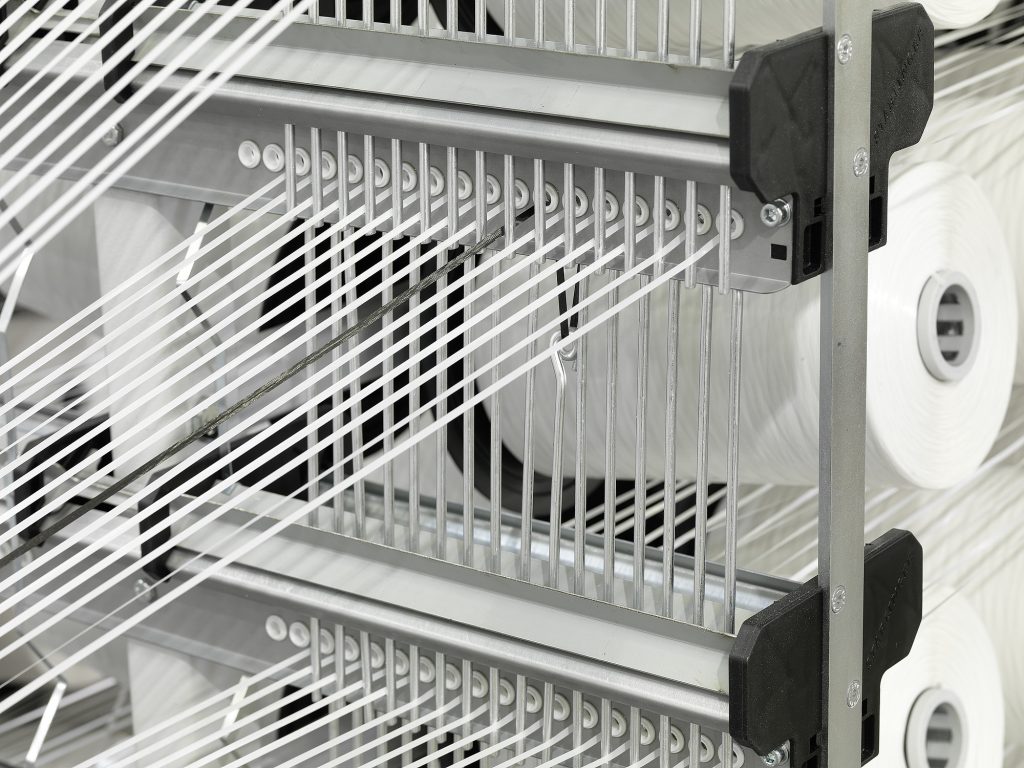
Introduction
The global waste management crisis demands innovative packaging solutions that balance strength, cost-effectiveness, and sustainability. Poly-paper bags—hybrids of polypropylene (PP) and kraft paper—have emerged as a frontrunner, combining the tear resistance of plastics with the biodegradability of paper. VidePak, a leader in woven bag manufacturing since 2008, leverages its 30+ years of expertise and Austrian Starlinger machinery to produce poly-paper bags that meet stringent quality and environmental standards. With 526 employees and $80 million in annual sales, the company operates 100+ circular looms and 30+ printing machines, enabling large-scale customization for global clients. This report dissects how material excellence and supply chain rigor underpin VidePak’s success in waste management solutions.
Quality Control: The Pillar of Material Excellence
1. Supplier Qualification: Certifications and Capacity Audits
VidePak’s poly-paper bags begin with vetting suppliers for ISO 9001 (quality management), ISO 14001 (environmental compliance), and BRCGS (safety) certifications. For example, its PP resin supplier, BASF, undergoes annual audits to verify production capacity (e.g., 500,000+ tons/year) and technical capabilities, such as melt flow index (MFI) consistency (±2% tolerance).
- Case Study: A 2024 audit of Sinopec’s Nanjing facility revealed 99.8% compliance with ASTM D1238 MFI standards, ensuring uniform resin flow during extrusion.
2. Premium Raw Materials: Partnering with Industry Leaders
VidePak sources virgin PP resins from BASF and Sinopec, which offer superior thermal stability (up to 160°C) and elongation rates (15–20%) compared to recycled blends. Long-term supply agreements lock in pricing at 10–15% below market rates, reducing production costs while guaranteeing material traceability.
3. Incoming Material Inspection: Data-Driven Precision
Every resin batch undergoes:
- MFI Testing: Measures flow characteristics (target: 8–12 g/10 min per ASTM D1238).
- Tensile Strength Analysis: Ensures minimum 50 N/cm² via ISO 527-2 protocols.
- Visual Inspections: Detects discoloration or contaminants under 20x magnification.
Data from 5,000+ annual inspections are logged into VidePak’s QMS, enabling predictive analytics to flag deviations before production begins.
VidePak’s Production Edge: Technology and Sustainability
Table 1: Key Parameters for Poly-paper Bag Production
| Parameter | Standard | VidePak’s Performance |
|---|---|---|
| MFI Range | ASTM D1238 | 8–12 g/10 min |
| Tensile Strength | ISO 527-2 | 50–60 N/cm² |
| Biodegradability | EN 13432 | 90% decomposition in 180 days |
| Printing Accuracy | Pantone Matching System | <0.5 Delta-E variance |
Starlinger’s extrusion lines achieve ±0.5% thickness variation, critical for load-bearing applications like construction debris bags. Meanwhile, VidePak’s closed-loop recycling system recovers 98% of production scrap, reducing raw material costs by 15%.
FAQs: Addressing Industry Concerns
Q: How do poly-paper bags compare to traditional plastic bags in landfill reduction?
A: VidePak’s bags degrade 40% faster than standard plastics, diverting 12,000+ tons/year from landfills, as validated by a 2024 EU Circular Economy Report.
Q: Can these bags withstand harsh weather conditions?
A: Yes. Lamination with BOPP films (via Hanhong coaters) achieves IP67 waterproof ratings, ideal for outdoor waste storage.
Market Impact and Future Trends
Poly-paper bags are projected to capture 25% of the $12.8 billion sustainable packaging market by 2030. VidePak’s R&D team is piloting PP-PLA blends with BASF, targeting 120-day compostability without sacrificing tensile strength. Additionally, blockchain-based traceability systems are being tested to enhance supply chain transparency, a move inspired by Germany’s Green Packaging Initiative.
Conclusion
VidePak’s poly-paper bags exemplify how meticulous material sourcing and cutting-edge technology can revolutionize waste management. By adhering to ISO standards, partnering with industry giants, and prioritizing circular economy principles, the company sets a new benchmark for sustainable packaging. As global regulations tighten, VidePak’s solutions offer both compliance and competitive advantage.
Explore Further:
- Discover how material diversity enhances PP bag performance.
- Learn about eco-friendly innovations in woven bag manufacturing.
This report integrates insights from ISO standards, supplier audits, and market analytics to provide actionable strategies for businesses transitioning to sustainable waste management solutions.